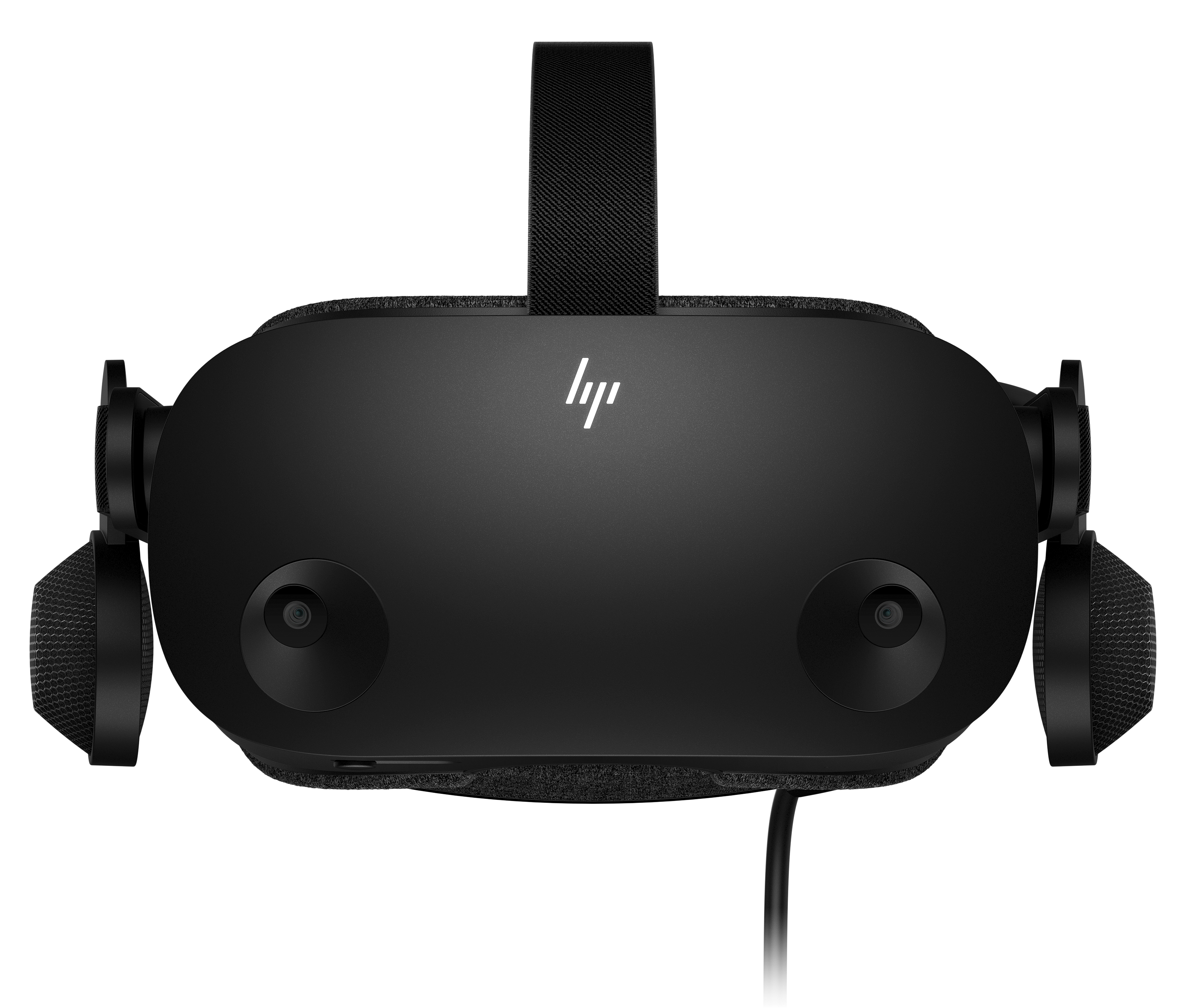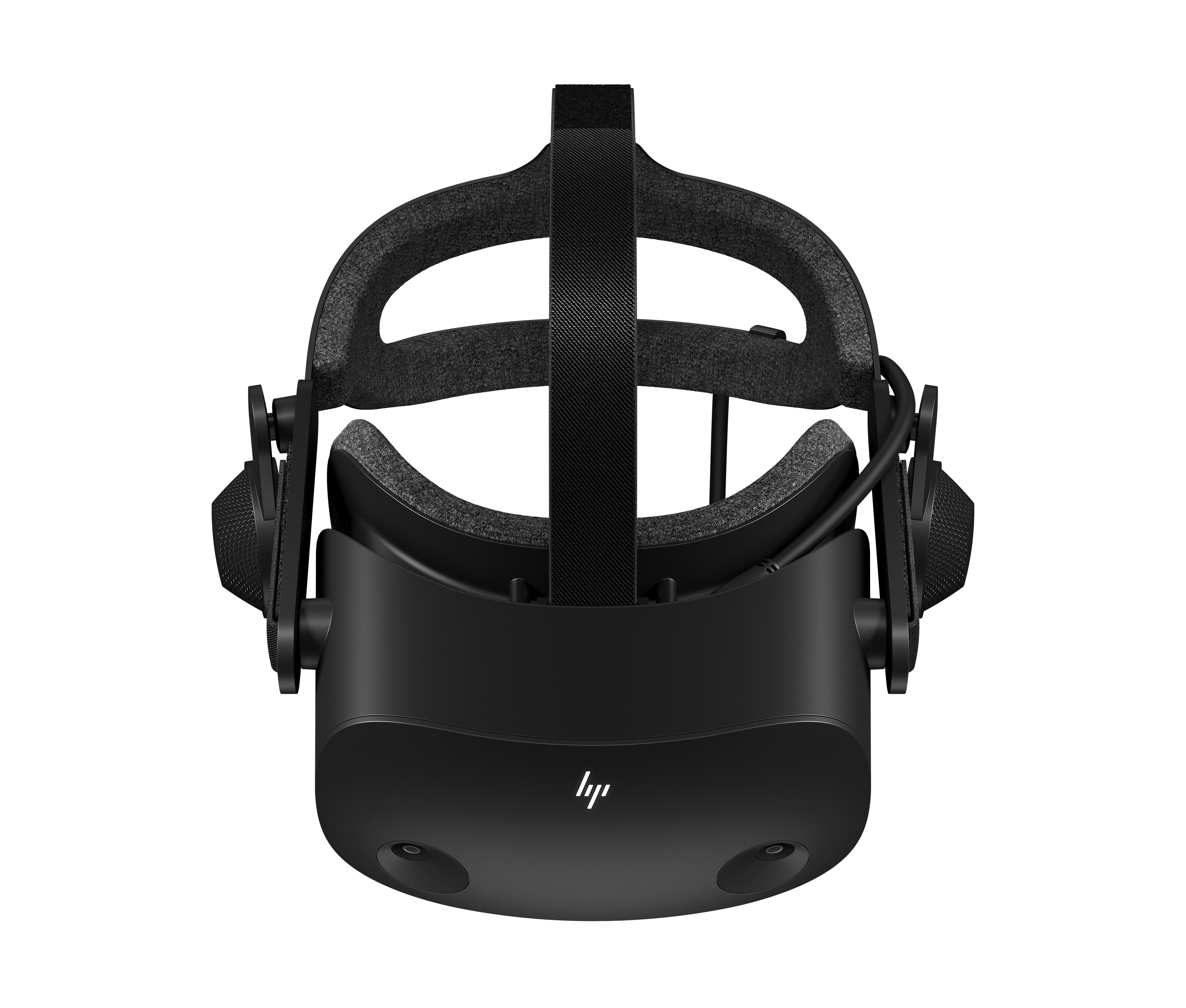HP Reverb G2 VR Headset Lures Gamers With Valve-Made Lenses
Our favorite Windows MR headset gets updated for gamers
After a shadowy teaser in March, HP today finally pulled the sheets off the Reverb G2 VR headset (available for pre-order now at $599). Like the prior HP Reverb, this is a Windows Mixed Reality (MR) PC-powered headset with inside-out tracking. This time around, however, HP is targeting the gear toward gamers more than businesses, touting Valve-created lenses and SteamVR support to get the job done.
Valve, of course, is the company behind the Steam gaming platform and who also helped developed the HTC Vive and HTC Vive Pro, finally launching its own VR headset, the Valve Index, last year. The Index uses external base stations for optimal tracking. The Reverb G2 on the other hand doesn’t require base stations, thanks to four inside-out tracking cameras. The Windows MR headsets doesn't claim to offer the same level of fidelity as the $999 (with base stations) Index.
HP’s Reverb G2 will be available this fall. The old Reverb debuted at $599 for the consumer edition, while the Oculus Rift S, another PC-connected headset and what HP pegged the Reverb G2’s closest rival, debuted at $399.
HP Reverb G2 Specs
| Header Cell - Column 0 | HP Reverb G2 | Oculus Rift S | HP Reverb |
|---|---|---|---|
| Panel | 2x 2.89-inch LCD with RGB sub-pixels | 2x LCD with RGB sub-pixel | 2x 2.89-inch LCD with RGB sub-pixels |
| Per-eye Resolution | 2160 x 2160 | 1280 x 1440 | 2160 x 2160 |
| Refresh Rate | 90 Hz | 80 Hz | 90 Hz |
| Field of View | 114 degrees | Not disclosed | ~114-degrees |
| Dimensions (L x W x H) | 7.3 x 3.3 x 3 inches | 8.7 x 7.6 x 4.1 inches | 7 x 3.3 x 2.2 inches |
| Weight (without cable) | 1.2 pounds | 1.2 pounds | 1.1 pounds |
| IPD | Hardware adjustable: 60-68mm | Software adjustable: 61.5-65.5mm | Software adjustable: 55-71mm |
In our HP Reverb review, we praised the comfort and high-resolution image quality the HMD offers. In fact, we consider it the best VR headset for those who need Windows MR. However, its dependence on Windows MR tracking is what ultimately held it back.
The prior Reverb targeted both enterprise and gamers with two different SKUs. In a press briefing, HP said its pushing its Reverb G2 as one SKU, with the primary focus being mainstream gamers.
“The primary goal of this was to develop the best immersive gaming experience, “John Ludwig, lead VR product manager at HP, said.
In its press briefing, HP pointed to data finding that in 2020, the number of gamers worldwide will hit 2.7 billion. It added that the global VR market is projected to reach $50 billion by 2025, but HP expects this figure to be even bigger.
Get Tom's Hardware's best news and in-depth reviews, straight to your inbox.
The Reverb G2 is still a Windows MR headset, although it can run SteamVR apps.
Valve-Made Lenses
The Reverb G2’s Valve-made and calibrated Fresnel lenses promise improved optics. The prior Reverb prioritized high resolution, enabling business applications, such as allowing architects to identify visual differences in leather grain. HP’s new VR headset focuses on improving the immersive experience with upgraded lenses designed with greater focus on clarity extending out to the edge and hardware-adjustable interpupillary distance (IPD).
These aren’t the same lenses you’ll find in the Index, which has larger LCD panels with larger lenses. The Reverb G2 opts for a smaller design that keep the HMD more lightweight (1.21 pounds compared to the Index’s 1.78 pounds).
Although they have the same resolution as the Reverb, HP claims the new panels offer more clarity, higher contrast and are brighter. There should be no mura, something the original Reverb was guilty of, Ludwig admitted. Still, Ludwig doesn’t claim that the headset is free from visual artifacts.
“There’s always gonna be a little bit of something,” he said when asked about godrays and smudging. “These are still Fresnel lenses, so everyone’s got a little something going on. It's really just a matter of what you see once you get in there.”
The new Reverb G2 still uses an RGB subpixel stripe. This means that each pixel has a red, green and blue subpixel that, at least in the Reverb and Sony PSVR’s case, lends more realistic colors. OLED competitors, such as the Oculus Quest, use a PenTile layout, where each pixel only has two subpixels and can’t make every color. RGB subpixel stripes also allow for greater pixel density and, therefore, a smaller HMD. The Reverb was remarkably comfortable, and HP is promising the same with the Reverb G2, which weighs only 1.6 ounces more than its predecessor. The Reverb G2 also supposedly has an improved facemask cushion to distribute the weight on your head better.
Ludwig also claimed that the Reverb G2’s pixels have reduced image persistence, so the pixels are lit up for a shorter amount of time. This results in less of a smearing effect in the display and less nausea for those prone to feeling ill in VR, the exec said.
Upgraded Controllers
The prior Reverbs used Windows MR controllers that showed faulty tracking and really held the headset back. The new Reverb G2 is said to improve on the older HMD with 6-degrees of freedom tracking that’s more than twice as good, since there are now four cameras instead of two. HP has added a camera to each side of the Reverb G2 to track hand movements.
“There's a lot of overlap in the front cameras but less overlap on the side cameras,” Ludwig explained. “That's how you get over two times controller tracking volume even though we have only two times the number of cameras.”
But although this is the first Windows MR headset to have more than two cameras, the Bluetooth controllers still use Windows MR tracking, so we’ll see if these new controllers really are enough to bring a marked improvement or put it on par with what comes with other PC-connected mainstream headsets, like the Oculus Rift S and its Oculus Insight tracking. The Rift S still seems to have an advantage over the Reverb G2 in having five cameras. Moreover, the Reverb G2’s cameras are still the same resolution as the original Windows MR tracking cameras.
Nevertheless, the Reverb G2’s controllers also bring redesigned ergonomics. HP worked with Valve and Microsoft for the new layout, which see the removal of trackpads and the addition of A, B, X and Y buttons. The menu button and Windows thumbstick remain; however, the grip button is now analog and, therefore, reports a value instead of just a 1 or 0.
The new controllers each run on two AA batteries (included). They are backwards compatible with other Windows MR headsets, like the prior HP Reverb and Samsung HMD Odyssey+, and can be purchased separately.
Valve Index Speakers on the HP Reverb G2
The Reverb G2 uses the same speakers found on the Valve Index for 3D spatial audio. That’s not a bad thing. In our Valve Index review, we praised the open-back speakers that hover 10mm over your ears and output clear, loud audio with surrounding noise still audible if necessary.
The Reverb G2 also has the same dual microphones with noise cancellation that the original Reverb had.
SteamVR Gaming on Windows MR
Like the prior Reverb and other Windows MR headsets, the Reverb G2 supports SteamVR applications through the Windows Mixed Reality for Steam VR app. Ludwig, lead VR product manager at HP, told press there’s been a “big improvement year over year” with the experience, making it comparable to native SteamVR gaming.
PC requirements remain unchanged from the original HP Reverb and call for an Nvidia GeForce GTX 1080 (or Nvidia Quadro P5200 / AMD Radeon Pro WX 8200) or better, along with an Intel Core i7 and 16GB of RAM.
HP’s first Reverb shined as a Windows MR headset with high-res images and a comfortable fit. When it came to competing with non-Windows HMDs, however, the Reverb couldn’t quite compete. The Reverb G2, a collaboration with both Valve and Microsoft, is still on Windows MR, so we’re not sure if it’s enough to win over gamers familiar with options from the likes of Oculus and HTC Vive. But if enough gamers do get on board, it could be just Windows MR needs to get more competitive in an increasingly XR market.
According to HP's announcement, SteamVR saw almost 1 million more HMDs connected in April, which is three times the previous biggest monthly gain.

Scharon Harding has over a decade of experience reporting on technology with a special affinity for gaming peripherals (especially monitors), laptops, and virtual reality. Previously, she covered business technology, including hardware, software, cyber security, cloud, and other IT happenings, at Channelnomics, with bylines at CRN UK.




